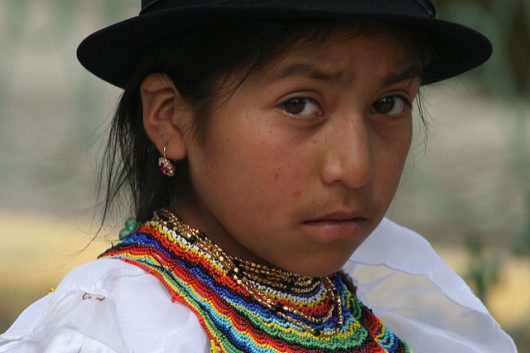Top 10 Facts About Living Conditions in Ecuador

Ecuador has long welcomed backpackers and tourists from around the world who wish to indulge in its rich culture and diverse nature. For this reason, one will encounter many resources for westerners considering resettling in the country.
The following 10 facts about living conditions in Ecuador focus on its natives rather than on expats who often settle in Ecuador carrying wealth and resources with them.
Top 10 Facts About Living Conditions in Ecuador
- In 2015, the life expectancy of an Ecuadorian was 76 years. This number is higher than in previous years but still lower than most countries like the U.K. where life expectancy was 81 years in 2015.
- In 2016, 22.9 percent of the Ecuadorian population lived below the national poverty line. This is lower than the 64.4 percent living below the poverty line in 2000. However, it is slightly higher than its 2014 rate of 22.5 percent. Thus, this statistic should be monitored in coming years to ensure that the rate does not increase or stabilize.
- In 2017, the average monthly wage was $437.44. This number is a slight increase from 2016 when the average monthly wage was $426.92. However, it is still significantly lower than the average monthly wage of $4,893 in the U.S.
- In 2018, the unemployment rate was 5.2 percent. A year prior, the unemployment rate in Ecuador was 5.4 percent. This suggests that the country is making slow progress.
- The 2018 labor force participation rate was 63.2 percent. This is lower than the 2017 labor force participation rate of 66 percent. There are many possibilities for this trend, including changes in social security systems and increased labor costs.
- Seventy-seven percent of indigenous children in Ecuador live in poor homes with daily incomes of just $2 or less. Seven percent of Ecuadorians are indigenous, which means that this 77 percent of indigenous children comprise a significant part of the total population.
- In 2016, the literacy rate in Ecuador was 94.4 percent. The literacy rate among women was 93.3 percent and 95.4 percent among men. This is much better than Tanzania where the literacy rate among adults is 77.89 percent. However, it is lower than in Spain where the literacy rate is 98.25 percent.
- In 2014, the infant mortality rate in Ecuador was 8.4 deaths per every 1,000 live births. This is down from 15.4 deaths per 1,000 live births in 2000. However, this number is higher than that of the U.S., which faced just 5.82 deaths for every 1,000 live births in 2014.
- In 2017, there was an average of 2.19 children born to every woman in Ecuador. This placed Ecuador in 99th place out of 224 countries in terms of births per woman. Niger was in first with 6.49 births per woman, while Singapore came in last with just 0.83 births per woman.
- In 2013, the Ecuadorian government passed communication laws that limit free speech. These laws require the verification of all information that the media wishes to disseminate. This allows the government to protect certain ideas or pieces of information and prevents freedom of expression and participation in national or international affairs.
These top 10 facts about living conditions in Ecuador evoke hope for the country’s potential for progress and a sense of urgent need for change. Among developing countries, Ecuador is doing relatively well. It is experiencing steady growth and its poverty rate has dramatically declined. However, it has a lot of growing to do before it reaches its full potential and becomes sufficiently developed.
– Julia Bloechl
Photo: Flickr
